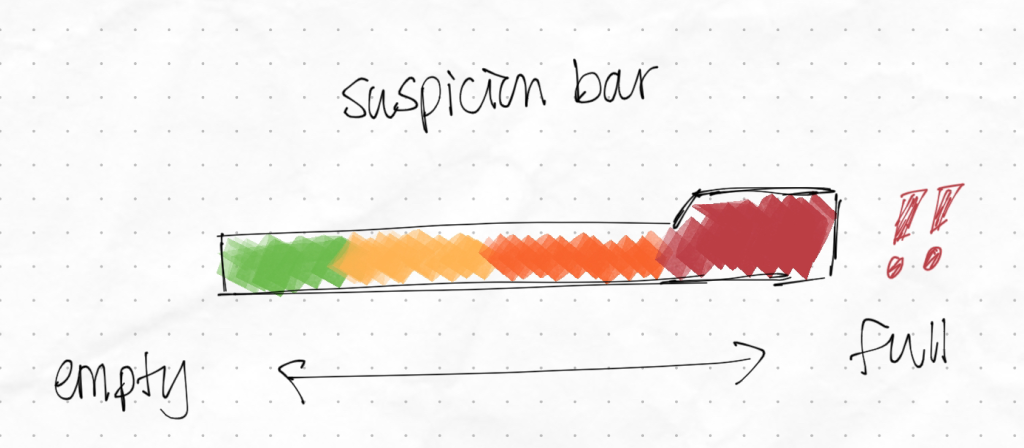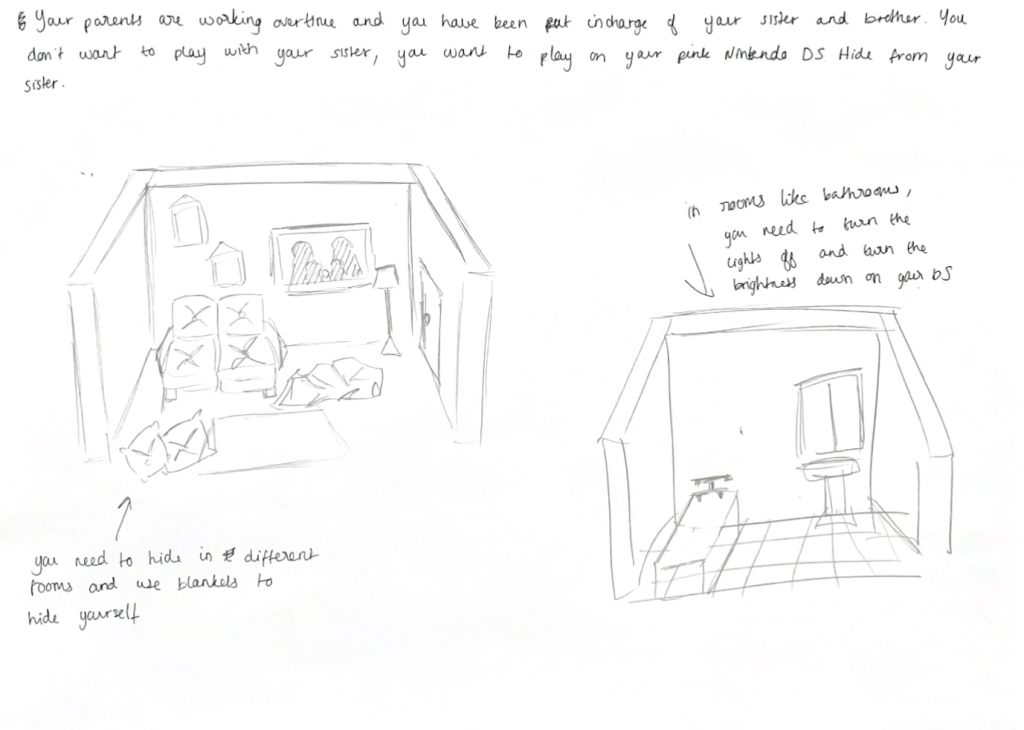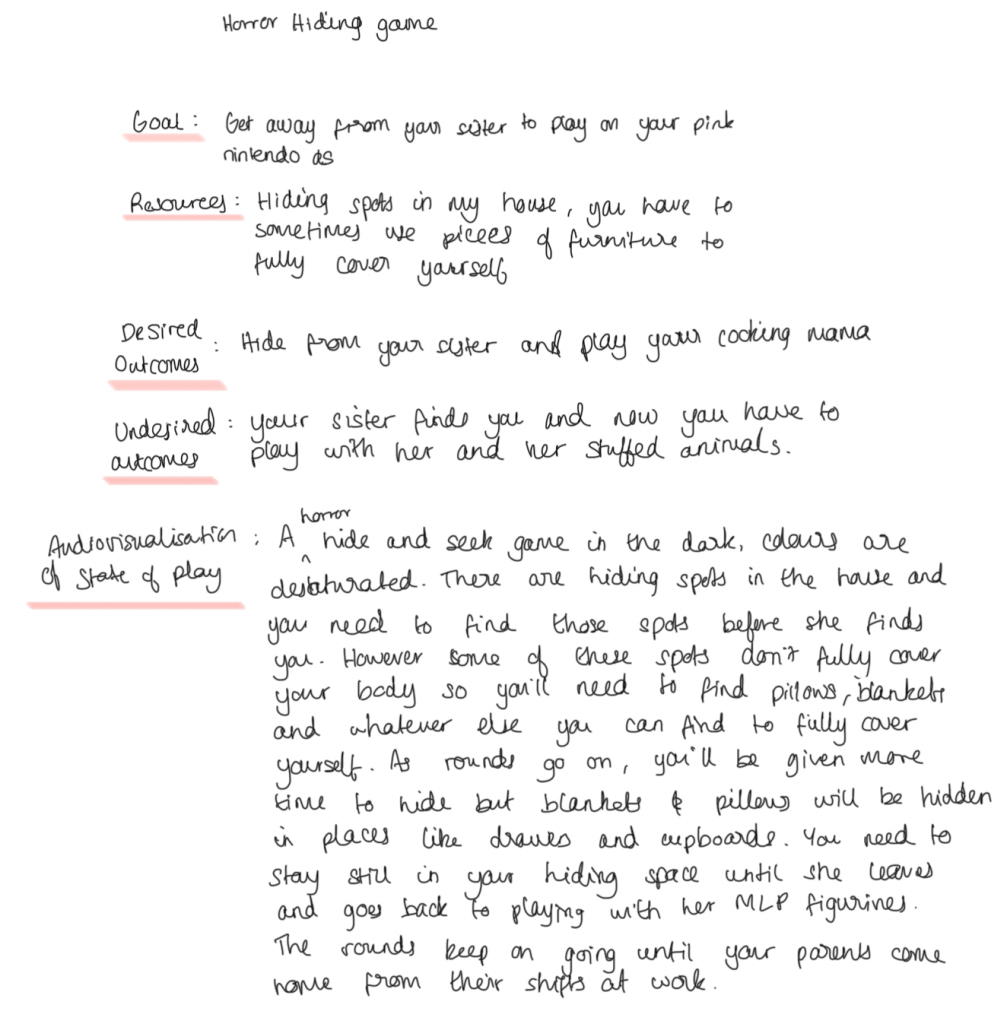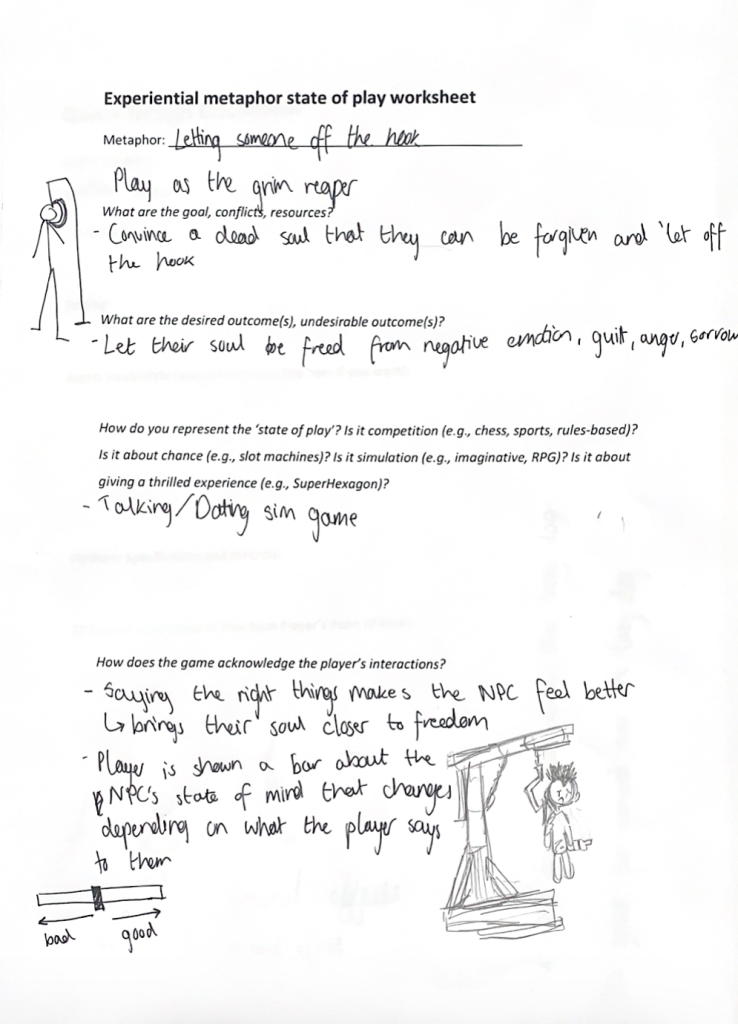Defining a GDD
Our first lesson back, we were greeted with our brief and what we had to deliver for this project. Today, we glossed over very lightly what a GDD is and I took it upon myself to look at two other GDDs.
A games design document or a GDD is a file that contains the necessary information that outlines the game’s main elements, mechanics and aesthetics. This is needed for a development team when the game is being distributed or made. But what is in a GDD? A GDD consists of a pitch, gameplay, mechanics, elements, assets.
In this workshop, we were given a worksheet to complete in groups. We had to create a logline that acted as the foundation for this task, this logline was a combination of:
- An adjective using the first letter of your name
- Your birth day
- Your birth month
As my name begins with the letter P, and I had a myriad of different adjectives to select from: Perfect, paranormal, paranoid, pastel, pleasant etc. I ended up choosing the word “paranormal”. My birthday month is November so the game genre would be a tower defence game and I was also born on the 13th meaning my setting would be a Venetian masquerade ball. The logline that was generated for me was paranormal, tower defence and venetian masquerade ball.
My group ended up choosing my longline and from there on, we started to develop this idea further. Eventually my group came up with a simple story and game mechanic idea, it goes as follows: As the player, you are here to protect the masquerade ball folk (that also happen to be cute animals) from the undead trying to sneak their way into the party. You protect the party go-ers by placing down towers that are orchestra themed, each tower does varying damage and reload times. When you click and drop these towers, they play a note of the instrument they’re holding. I liked this activity because it welcomed me back into the course with ease, it was a nice task that me and my group got done although slow at the beginning, fast once we knew what we were doing.

Now that I had a general idea of what a GDD is, I had a look at different GDDs and made notes about what they had in them, to further help me with making mine later down the line.

Summary of findings
After reviewing both GDDs I feel less intimidated to make one myself now. From what I have gathered from this research to make a successful and concise GDD, I will need to start off with an introduction to my game that lasts roughly 30 seconds and include the genre of game, my demographics and how long it would take. I need to talk about the actual gameplay itself, the goals of the game, the desired outcomes and the undesired outcomes/how the player loses. How the game’s story plays out and the in-game UI. Similarly, I will need to talk about the mechanics and go into depth about the game’s “laws of physics”, what buttons do what, the combat system (if there is one) and what happens to the player if they get damage. I will also need a category on game elements, this goes through the story’s history, politics, the main story, characters, NPCs, locations, environment design. In regards to assets, I will cover briefly on music, SFX (Give examples/Youtube links) and props.
Essential Experience
The following lesson, we were introduced to what an essential experience is and to help us understand it in more detail, we also did a mini task.
Essential experience are the emotions that the player is going to feel, impacted by the events that will happen in the game. For example, when a player finds treasure, they may be ecstatic and when they defeat a boss, they may feel triumphant.
In this exercise, I have created a game pitch that is something personal to me and my life and outline the essential experiences. The first thing that I thought of was my childhood and transforming that into a game, then I remembered a core memory from when I was really young and when my little sister was still quite clingy to me. I think most older siblings find this relatable when I say, that their younger siblings at one point during their childhood were following them around the house, bothering them and repeating the same sentence again and again, “Play with me! Play with me!”. I decided to turn this core older sibling memory into a game mechanic.
This game is a horror hide and seek, as the older sibling you’ve been put in charge whilst your parents come back from work. However, you want to stay in your room to play on your pink Nintendo DS playing your favourite game, Cooking Mama. But there’s one problem… Your little sister wants to play with you. You need to hide away from your sister by finding hiding spots in the house. She’ll look around the room very briefly before going back to play with her My Little Pony figures. During this time, you mustn’t move, control your heart beat and shut your DS off or she’ll see the light. For these mechanics, I thought about the player having to complete a mini rhythm game, where they have to click their mouse at the right time; kind of like how Roblox DOOR’s mini game when the figure finds you in the closet. If the player fails, your sister’s suspicion bar goes up a tiny bit.

When she leaves, you can go back to playing on your DS, but remember to find somewhere else to hide, you can’t hide in the same place again or her suspicion level will increase significantly. In your house, there aren’t that many hiding spots so you’ll need to resort to using pillows, blankets and laundry you can use to hide yourself in; make sure to properly conceal your body though. As the rounds go on, you will be given more time to hide however, objects to hide yourself will be harder to find. The player loses by either filling up the suspicion bar all the way up or by getting caught by your sister. The win conditions are surviving the night, wait for your parents to come back from work.


Experiential Metaphor or State
An experiential metaphor is a metaphor that is based on our physical experiences with the world and how we correlate the locations with our feelings.
Metaphors can be made into game mechanics, for example, walking on egg shells can be made into a sneak and stealth game where the player has to quietly exit a dragons nest without stepping on any eggshells. In this activity, we were given a worksheet to complete. What we had to do was pick a metaphor on the board and transform them into a game. Me and my partner chose the phrase, “letting someone off the hook”.

In this game, you play as the Grim Reaper and the game takes place in hell. Your job is to convince lost souls that they can be forgiven and “let off the hook” in a figurative and literal sense. By letting someone off the hook, they can be freed from consuming emotions, but if you fail to do your task, they continue to burn in the fires of hell. It’s similar to a dating sim in the sense where you as the player has to say the most favourable sentence to the soul, to make them feel better. The player is shown a bar of the soul’s state of mind and this bar changes depending on what the player says to them.

